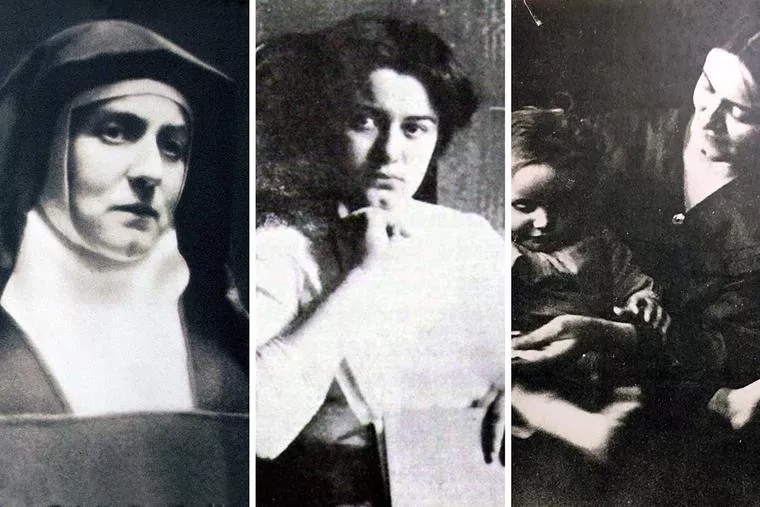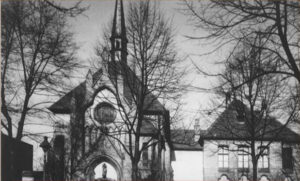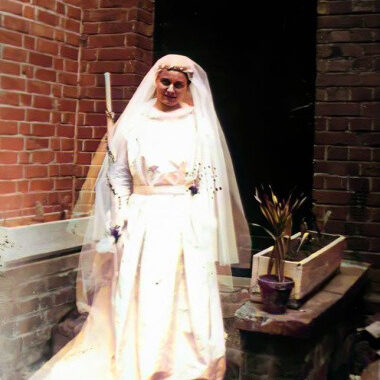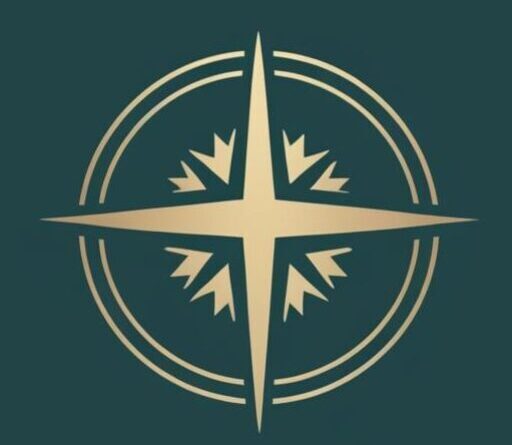Imagine a road that crosses through time and places, connecting reason and faith, philosophy and spirituality. That’s the road Edith Stein traveled—a woman who started out as a Jewish philosopher and became Saint Teresa Benedicta of the Cross, one of the most inspiring figures of the 20th century. In this story, we’ll walk alongside her on her journey, from her early days in Breslau to her final moments in Auschwitz. Along the way, we’ll see how she found in Christ the truth her mind and heart had always searched for. And you, the reader, are invited to come along and reflect on how Edith’s choices might shed light on your own journey of faith.

The Spark of Curiosity: Edith Stein’s Early Steps
Edith was born on October 12, 1891, in Breslau, Germany, into a devout Jewish family. It was Yom Kippur, the Day of Atonement, and her mother, Augusta, saw in her the promise of wisdom. But Edith’s life was anything but a straight line. As a teenager, she declared herself an atheist—not out of rebellion, but because of an honest search for the truth. A professor once told her, “Strike this stone (Stein), and wisdom will come out,” recognizing her sharp mind.
She threw herself into her studies and became a student of Edmund Husserl at the University of Breslau. Later, she was the first woman in Germany to defend a doctoral thesis in philosophy. Her mind was like a lighthouse, shining through the sea of reason, but her heart still longed for something deeper.
Not many people know that during World War I, Edith worked as a nursing assistant, caring for wounded soldiers. This close contact with human suffering planted seeds of compassion in her that would blossom later in her faith.
The Night Everything Changed: Edith’s Conversion to Catholicism
In 1921, while staying at a friend’s house in Bavaria, Edith picked up a book that would change her life forever. It was The Book of Her Life, by Saint Teresa of Ávila. She started reading it at night and didn’t stop until morning. When she closed the book, she simply said, “This is the truth.” Those words, written by a 16th-century saint, touched her heart in a way that philosophy never had. After years of searching, it was like she had finally found what she was looking for.
On January 1, 1922, Edith was baptized into the Catholic Church, sealing her new faith.
But her conversion wasn’t an isolated event. She had been influenced by thinkers like Max Scheler, who helped her see religion as essential to human fulfillment, and by friends like Adolf and Anna Reinach. After Adolf died in the war, Edith was deeply moved by Anna’s Christian faith. Another little-known fact: In 1933, Edith wrote a letter to Pope Pius XI, asking him to publicly condemn the Nazis and their persecution of Jews. Though she never got a response, the letter shows her courage and commitment.
Her conversion caused tension in her family, especially with her mother, who never accepted Edith’s decision to leave Judaism. That was a painful shadow on Edith’s path.
Called to Silence: Edith’s Life in the Carmelite Convent

In 1933, Edith entered the Carmelite convent in Cologne and took the name Teresa Benedicta of the Cross. She once wrote, “In Carmel, God has given me something I would find nowhere else in the world,” reflecting her sense of vocation. She found silence there—but also faced new challenges.

As the Nazi threat grew, she was moved to another convent in Echt, the Netherlands, in 1938. There, she kept writing, including her major work Finite and Eternal Being, which blended philosophy and mysticism. Her time in Carmel was like a pause on her journey—a moment of deep reflection before the coming storm.
The Final Sacrifice: Edith’s Martyrdom in Auschwitz
By 1942, Edith’s path led to a dark and tragic destination. On August 2, she and her sister Rosa (who had also converted) were arrested by the Gestapo. This was in retaliation for a letter from Dutch bishops condemning Nazi racism. Edith and Rosa were deported through Amersfoort and Westerbork and arrived at Auschwitz on August 7.

Even though she had chances to escape, Edith refused. She said, “If someone were to take me out of this now, it would be like destroying the opportunity to share in the fate of my people.” In Auschwitz, witnesses said she took care of children, comforted other prisoners, and prayed, keeping an incredible sense of peace.
On August 9, 1942, she and Rosa were killed in the gas chamber. Their bodies were cremated, but Edith’s final offering was clear: “I wish to offer myself for the salvation of souls and true peace.”
One lesser-known fact: Even the guards noticed Edith’s calm in the camp, and it’s said she helped others hold onto hope, living her faith to the very end.
A Light for Europe: The Legacy of Saint Teresa Benedicta
In 1998, Edith Stein was canonized by Pope John Paul II, who said, “She embraced the cross with hope.” In 1999, he named her one of the co-patron saints of Europe, saying, “To proclaim Edith Stein co-patroness of Europe is to raise a banner of respect, tolerance, and acceptance over the continent.”
Her life shows us that faith and reason can walk hand in hand, and that love is stronger than hate. Today, she continues to inspire millions of people, proving that even in the darkest times, it’s possible to live with dignity and courage.
Milestones of an Extraordinary Life
Now that we’ve walked Edith Stein’s path together, why not pause and look at some of the key moments that marked her journey? Each step is like a signpost on the road of faith—pointing to courage, the search for truth, and sacrifice. Here are some of the defining moments of her life:
Canonization (October 11, 1998): Declared a saint by Pope John Paul II and named co-patroness of Europe.
Birth (October 12, 1891): Born in Breslau, Germany, into a devout Jewish family, on the holy day of Yom Kippur.
Conversion to Catholicism (January 1, 1922): After reading The Book of Her Life by Saint Teresa of Ávila, she found the faith she had been searching for.
Entered Carmel (1933): Took the name Teresa Benedicta of the Cross, embracing a life of contemplation.
Transfer to Echt, Netherlands (1938): Fled Nazi persecution and continued her mission in a new home.
Arrest by the Gestapo (August 2, 1942): Captured with her sister Rosa after Dutch bishops denounced the Nazis.
Deportation to Auschwitz (August 7, 1942): Transported via Amersfoort and Westerbork on her way to martyrdom.
Death in Auschwitz (August 9, 1942): Executed in the gas chamber; her body was cremated, but her spirit endures.

I’m Jonathan Raeder, scholar of philosophy and the Catholic faith, deeply dedicated to exploring the teachings and traditions of the Church. Through years of study and reflection, I have gained a thorough understanding of Catholic philosophy, theology, and spirituality. My intention is to connect intellectual reflection with lived faith, shedding light on the richness of Catholic thought for all who wish to do so.

